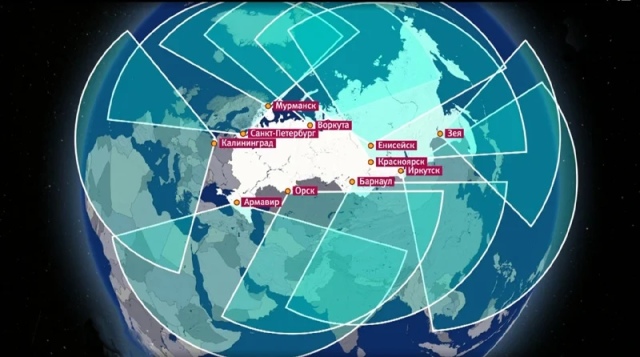The Russian missile warning system consists of two echelons: space and ground-based
MOSCOW, January 2. /TASS/. The Russian Space Forces tracked more than 80 launches of foreign and domestic rockets in 2020. This was reported to journalists in the Ministry of Defense of the Russian Federation.
"As part of the combat duty in 2020, more than 80 launches of foreign and domestic ballistic missiles and space missiles were detected by the on - duty means of the Russian missile attack warning system (SPRN), specialized means of space control systems and missile defense," the ministry said.
The Russian SPRN consists of two echelons: the space one, which currently includes four Tundra satellites, and the ground one, which consists of a network of Voronezh-type stations that cover all missile-hazardous areas with their radar field. The main purpose of the system is to detect and escort ballistic missiles fired at the territory of the Russian Federation or its allies as soon as possible.
Modernization of the control point of the space echelon of the SPRN
The Ministry of Defense also reported that specialists have carried out a complete modernization of the control point of the space echelon of the missile attack warning system (SPRN).
"As part of the improvement of the space echelon of the missile attack warning system, a complete modernization of the control point of the space echelon of the SPRN was carried out," the ministry said.
In 2020, the second stage of the deployment of the orbital grouping of the Unified Space System, which will become the basis of the space echelon of the SPRN, was completed. The satellite system will reduce the detection time of ballistic missile launches and increase the efficiency of information about missile threats.
In addition, as noted in the Ministry of Defense of the Russian Federation, work continues on the creation of new radar stations in the Murmansk region. In 2021, it is planned to complete the construction of the Voronezh radar station in the Komi Republic.
Currently, seven Voronezh radars are deployed in the Leningrad, Kaliningrad, Irkutsk, Orenburg regions, Krasnodar, Krasnoyarsk and Altai Territories. They are on combat duty for radar control of missile-hazardous areas in the areas of responsibility.
Unified Space System
In May 2020, the fourth Kupol spacecraft was launched, which completed the second stage of the deployment of the CEN orbital constellation.
In August, the CEO of Rocket-space Corporation "Energy" Igor Ozar said that unified space system "Kupol" for the control of ballistic missiles, developed for the defense Ministry, brought up to minimum staffing.
The Russian SPRN consists of two echelons: the space one, which currently includes four Tundra satellites, and the ground one, which consists of a network of Voronezh-type stations that cover all missile-hazardous areas with their radar field. The main purpose of the system is to detect and escort ballistic missiles fired at the territory of the Russian Federation or its allies as soon as possible.
In June 2020, a source in the military-industrial complex told TASS that the Tundra satellites are equipped with a new generation of infrared devices that allow high accuracy to record missile launches against the background of the earth's surface, and are able to track the flight paths of ballistic missiles and automatically predict the fall zones of their warheads. Earlier, another source in the military-industrial complex told TASS that a total of nine new vehicles should be involved in the Dome system.

